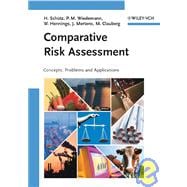
Note: Supplemental materials are not guaranteed with Rental or Used book purchases.
Purchase Benefits
What is included with this book?
Peter M. Wiedemann is the Director of the MUT Program Group and also teaches at the University of Innsbruck, Austria. He was elected President of the Society for Risk Analysis - Europe and served on the WHO task force on risk communication, the Scientific Expert Group of the National Action Program "Environment and Health", and on the EMF Communication Group of the WHO EMF Project. He has extensive experience in societal conflicts over modern technologies with a focus on risk communication and conflict resolution.
Wilfried Hennings is a member of the MUT Program Group, whose current research centers on methods for assessing technological risks. He received his diploma in electrical engineering from the RWTH Aachen University.
Johannes Mertens is a member of the MUT Program Group, who received his PhD in physics from the RWTH Aachen University. His recent research is on the assessment and management of technological risks.
Martin Clauberg is a lecturer at the University of Tennessee, Knoxville and also Sr. Risk/Science Consultant & Founder of Dr. Clauberg-Consulting, Germany & US. He has been a visiting scientist at the Jülich Research Center and at the National Institutes of Health, Washington, DC, as well as Human Health Risk Assessor & Risk Assessment Team Leader at Oak Ridge National Laboratory.
| Foreword | ix | ||||
| Acknowledgements | xi | ||||
| Summary | 1 | (6) | |||
|
7 | (6) | |||
|
13 | (14) | |||
|
13 | (3) | |||
|
16 | (1) | |||
|
17 | (1) | |||
|
17 | (1) | |||
|
18 | (2) | |||
|
20 | (1) | |||
|
21 | (2) | |||
|
23 | (2) | |||
|
25 | (2) | |||
|
27 | (50) | |||
|
27 | (7) | |||
|
27 | (2) | |||
|
29 | (3) | |||
|
32 | (2) | |||
|
34 | (43) | |||
|
34 | (6) | |||
|
40 | (6) | |||
|
46 | (9) | |||
|
55 | (11) | |||
|
66 | (9) | |||
|
75 | (1) | |||
|
75 | (2) | |||
|
77 | (28) | |||
|
77 | (1) | |||
|
78 | (5) | |||
|
83 | (14) | |||
|
83 | (2) | |||
|
85 | (3) | |||
|
88 | (2) | |||
|
90 | (5) | |||
|
95 | (2) | |||
|
97 | (8) | |||
|
98 | (1) | |||
|
99 | (2) | |||
|
101 | (1) | |||
|
102 | (3) | |||
|
105 | (30) | |||
|
105 | (9) | |||
|
105 | (4) | |||
|
109 | (3) | |||
|
112 | (2) | |||
|
114 | (21) | |||
|
115 | (2) | |||
|
117 | (18) | |||
|
135 | (20) | |||
|
135 | (3) | |||
|
138 | (7) | |||
|
138 | (3) | |||
|
141 | (2) | |||
|
143 | (1) | |||
|
144 | (1) | |||
|
145 | (1) | |||
|
146 | (2) | |||
|
148 | (2) | |||
|
150 | (5) | |||
| Appendix 1: Risk Metrics | 155 | (10) | |||
| Appendix 2: Multiattribute Comparative Risk Evaluation (MCRA) | 165 | (16) | |||
| Appendix 3: Comparative Evaluation of Unclear Risks | 181 | (8) | |||
| Appendix 4: Comparative Evaluation of the Risks of Hazardous Incidents | 189 | (6) | |||
| References | 195 | (18) | |||
| Abbreviations of Organizations | 213 | (2) | |||
| Index | 215 |
The New copy of this book will include any supplemental materials advertised. Please check the title of the book to determine if it should include any access cards, study guides, lab manuals, CDs, etc.
The Used, Rental and eBook copies of this book are not guaranteed to include any supplemental materials. Typically, only the book itself is included. This is true even if the title states it includes any access cards, study guides, lab manuals, CDs, etc.